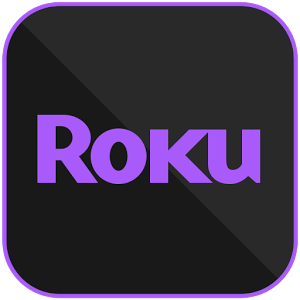Category: internet stock research
Bumble: A Different Kind of Dating Platform
 Bumble (NASDAQ: BMBL), an online dating and social networking platform, was founded in 2014 by Whitney Wolfe Herd. Headquartered in Austin, Texas, with offices in Barcelona, London, and Moscow, Bumble was created with women at the center; a dating solution where women make the first move. Bumble is rewriting the script on gender norms, with a platform designed to be safe and empowering for women while also providing a better environment for all. Bumble utilizes innovative technology solutions to build a safer and more inclusive way to connect online, regardless of gender. Consensus estimates call for the company to generate revenue of $724 million this year, with profitability bordering on break-even.
Bumble (NASDAQ: BMBL), an online dating and social networking platform, was founded in 2014 by Whitney Wolfe Herd. Headquartered in Austin, Texas, with offices in Barcelona, London, and Moscow, Bumble was created with women at the center; a dating solution where women make the first move. Bumble is rewriting the script on gender norms, with a platform designed to be safe and empowering for women while also providing a better environment for all. Bumble utilizes innovative technology solutions to build a safer and more inclusive way to connect online, regardless of gender. Consensus estimates call for the company to generate revenue of $724 million this year, with profitability bordering on break-even.
Bumble debuted on the NASDAQ on February 11th, 2021, in a 57.5 million Class A common stock offering, priced at $43 per share. Bumble’s pre-IPO balance sheet consisted of $218 million in cash with $628 million in debt. When added to the $2.5 billion raised from the offering, Bumble possessed close to $2.7 billion in cash with $628 million in debt immediately after the offering. With a recent share price of $60, Bumble carries a market cap of approximately $11.2 billion.
Bumble’s platform enables users to connect and build healthy relationships on their own terms. Further, Bumble believes there is an opportunity to extend its solutions beyond dating, to encompass relationships across all areas of life, including friendships, careers, and more. By empowering women across all their relationships, Bumble feels it can grow into a leading global women’s brand.
Bumble currently operates two apps, Bumble and Badoo, where more than 42 million users come every month to discover new people and connect in an empowering, secure, and safe environment. These two apps run on a common infrastructure, allowing insights to be shared between the apps. Bumble believes this is an integral piece in providing its users with high-quality and personalized experiences. Bumble facilitated an average of more than 150 million messages sent per day across its two apps in the nine months ended September 30th, 2020.
The Bumble app was released in 2014 and was one of the first dating apps built with women at its core. With Bumble, women make the first move, and have done so more than 1.7 billion times since the app’s launch. Bumble supports roughly 12 million monthly active users, and is the second highest grossing dating app in the world, according to Sensor Tower. Bumble is a leading online dating platform in many countries, such as the United States, the United Kingdom, Australia, and Canada. During the nine months ended September 30th, 2020, Bumble boasted 1.1 million Bumble App Paying Users.
The Badoo app was founded by Andrey Andreev and first launched in 2006. This app was a pioneer in free web and mobile dating products. Badoo’s slogan of “Date Honestly” deeply connects to Bumble’s focus on building meaningful relationships for everyone. Bumble and Badoo are two of the highest grossing online dating apps in the world. According to Sensor Tower, as of August 2020, Bumble ranked in the top five grossing iOS lifestyle apps in 30 countries, and Badoo ranked among the five highest grossing iOS lifestyle apps in 89 countries.
Roku
Taking a Switzerland-style Approach to Internet Television
 Roku (NASDAQ: ROKU), a provider of television streaming devices, and advertising services, becomes the most recent addition to our Battle Road IPO Review Hardware coverage. Founded in 2002, and based in Los Gatos California, the company is best known for its Roku family of internet streaming devices, having been a pioneer in the field. The company is led by founder and CEO Anthony Wood. Steve Louden, CFO, joined Roku in June of 2015, after having held various finance roles at Expedia, between 2009 and 2015, including VP of corporate finance, and treasurer. Consensus estimates call for revenue of $485 million and a Loss Per Share of $0.64 in the current year, while next year, the company is expected to reach $625 million in revenue, and record a loss of $0.50.
Roku (NASDAQ: ROKU), a provider of television streaming devices, and advertising services, becomes the most recent addition to our Battle Road IPO Review Hardware coverage. Founded in 2002, and based in Los Gatos California, the company is best known for its Roku family of internet streaming devices, having been a pioneer in the field. The company is led by founder and CEO Anthony Wood. Steve Louden, CFO, joined Roku in June of 2015, after having held various finance roles at Expedia, between 2009 and 2015, including VP of corporate finance, and treasurer. Consensus estimates call for revenue of $485 million and a Loss Per Share of $0.64 in the current year, while next year, the company is expected to reach $625 million in revenue, and record a loss of $0.50.
Roku made its debut on the NASDAQ on September 28, in a 15.7 million Class A share IPO, priced at $14 per share. The IPO closed on October 1st, with the underwriters having exercised the option to purchase an additional 2.4 million shares. In all, the company sold 10.4 million shares, while selling shareholders sold 7.7 million shares. Importantly, the company’s Class B shares contain 10x the voting power of the Class B shares sold to the public, and Class B shareholders retain 98 percent of the voting rights post offering. Combined, there are now roughly 97 million shares outstanding. At a recent price of $38, Roku has a market cap of roughly $3.8 billion. The IPO was led by Morgan Stanley, Citigroup Capital Markets, Allen & Company, RBC Capital Markets, Needham & Company, Oppenheimer, and William Blair. Roku has a 180 day lock-up period that expires on March 27, 2018.
Best known for its family of internet streaming devices, Roku, in its current incarnation, was essentially a spin-out from Netflix (NASDAQ: NFLX), which had conducted work to develop and manufacture its own television streaming device about a decade ago. Upon further reflection, however, Netflix concluded that selling its own streaming device would undercut its efforts to persuade other manufacturers of such devices to support Netflix’s television and movie streaming content. A new company was created, under the name Roku, and each party was free to pursue its rivals to support its devices and content separately.
With Anthony Wood at the helm, therefore, grew up alongside Netflix, as one of the first commercially successful streaming device manufacturers in the early days of internet TV. Though Roku continues to garner the largest installed base of internet streaming devices, its success has since drawn numerous competitors into the market, including Apple, Amazon.com, and Google, all of which offer internet television streaming devices.
Today, Roku offers five different devices, priced between $29.99 and $99.99 at retail. For all of 2016, the company’s devices accounted for roughly 74 percent of revenue, with advertising and subscription revenue sharing accounting for the remainder. In 2016, device revenue grew by nine percent over the prior year. Gross margin from devices was roughly 15 percent, attesting to the price competitiveness of the category. In the first half of 2017, device revenue contracted by two percent versus the prior year, while gross margin fell from 17 percent to just 12 percent.
The more exciting part of Roku’s business is what it refers to as “platform,” which includes advertising and subscription revenue sharing. Using its position as a Switzerland-style provider of streaming services, unencumbered by ties to any of the cable network or internet streaming service providers, Roku has developed relationships with advertisers that are eager to take part in the trend toward internet television, and provide ads to internet television watchers. Through its opt in system, Roku is able to record the preferences of viewers, presumably capturing important demographic data that enables advertisers to reach their intended audience more efficiently. Roku claims 15 million such subscribers from among the total number of devices sold.
Today, advertising accounts for 67 percent of the company’s platform revenue, which totaled $82 million in the first half of 2017, up 91 percent from the prior year. Platform revenue grew from 27 percent of sales in the first half of 2016 to 41 percent in the first half of 2017. Platform gross margin was 76 percent in the first half of 2017, up from 71 percent in the first half of 2016. As a result of the shift in revenue mix, the company was able to achieve 23 percent revenue growth in the first half of 2017, along with a gross margin of 38 percent, considerably higher than the 31 percent achieved in the prior year.
While the above-mentioned trends narrowed the company’s operating losses, Roku still has much work ahead if it intends to run a profitable business. The company’s operating loss was $43 million in 2016. Its operating loss was $21 million in the first half of 2017, an improvement over the $32 million operating loss of 1H 2016. Despite the favorable trends in revenue and gross margin, Roku ramped up its R&D spending by 25 percent, reaching $48 million in the first half of the year, or 24 percent of total revenue, an exorbitant sum, which calls into question its desire or plan to improve profitability.
Over the last few years, the competitive landscape has intensified, with Apple, Amazon.com, and Google having introduced a variety of new devices into the market, as the battle for the living room spawned by the rise of internet television viewing continues. Overall, we are intrigued by Roku’s approach, which provides benefits for viewers, advertisers, and content creators. Nevertheless, we would prefer to see solid evidence of reaching and sustaining profitability, particularly given its current valuation, which has rallied dramatically in the last week, after reporting results for its first quarter as a public company.
Post IPO, Roku has a very good balance sheet with an estimated net cash position of $245 million post-offering, inclusive of $23 million in long term debt. Nonetheless, given the expectation for continued losses this year and next, the stock ranks near the very bottom of our Hardware sector coverage.

